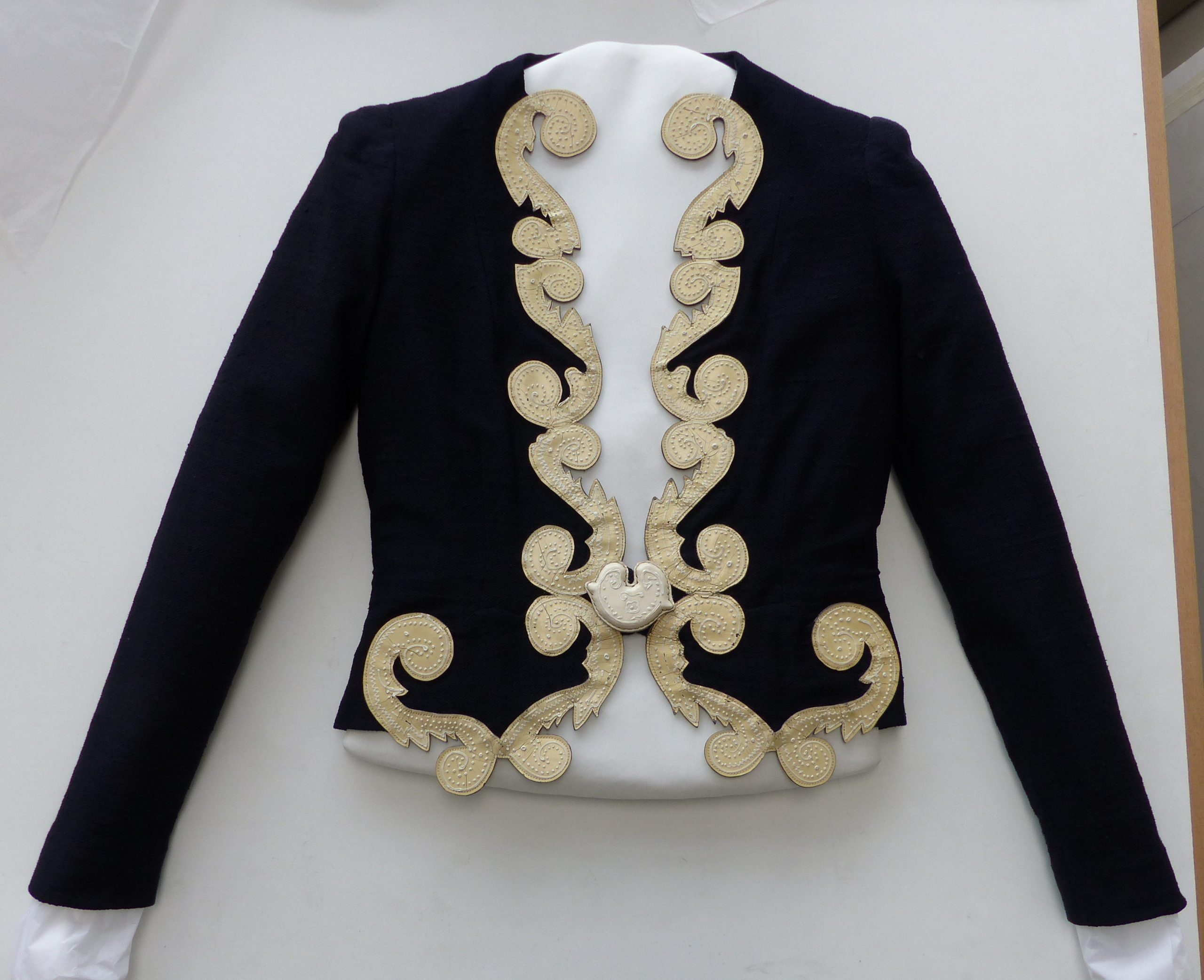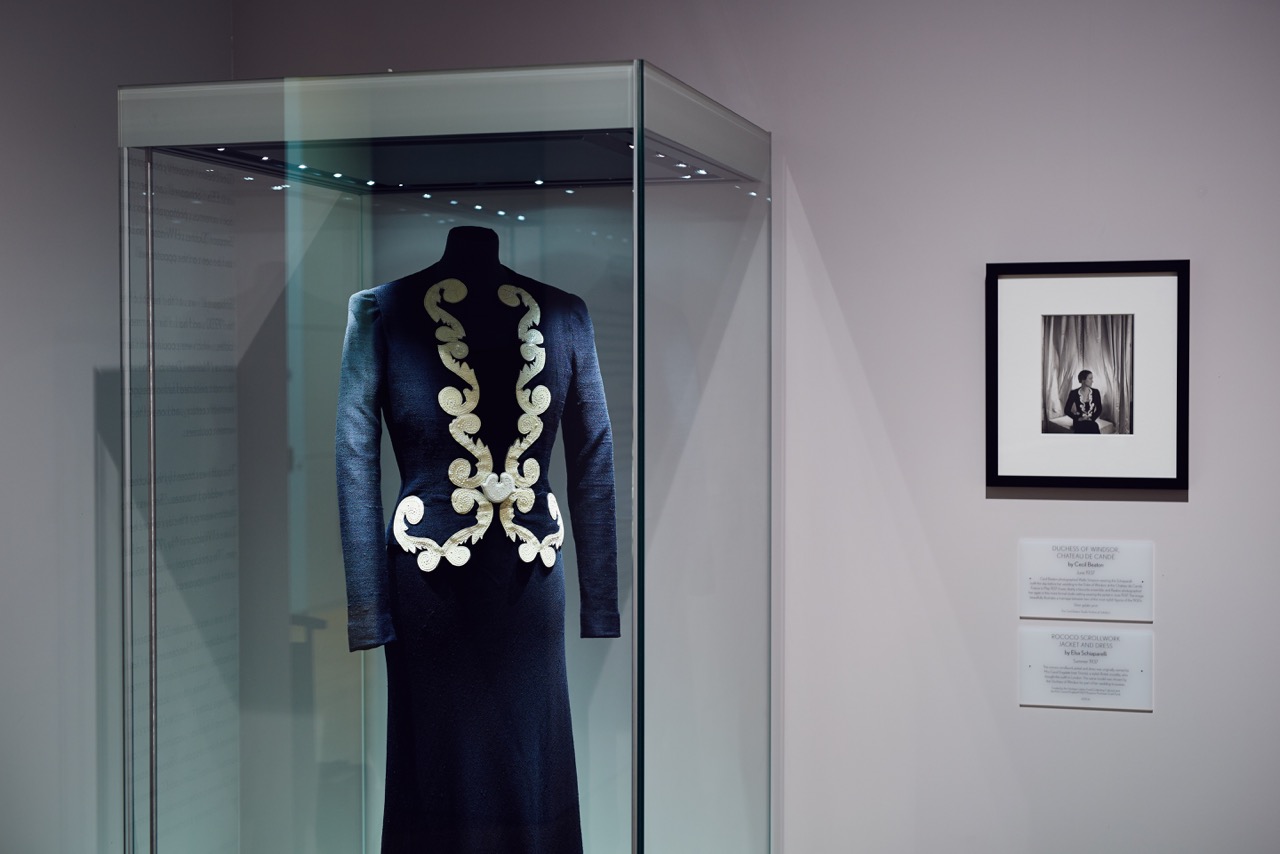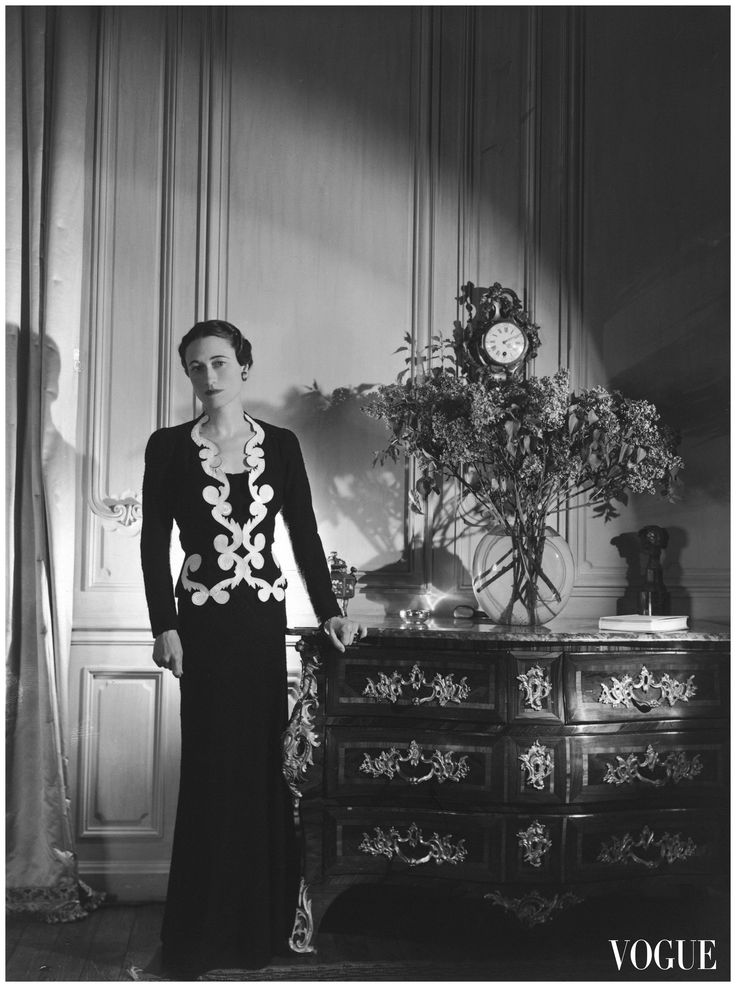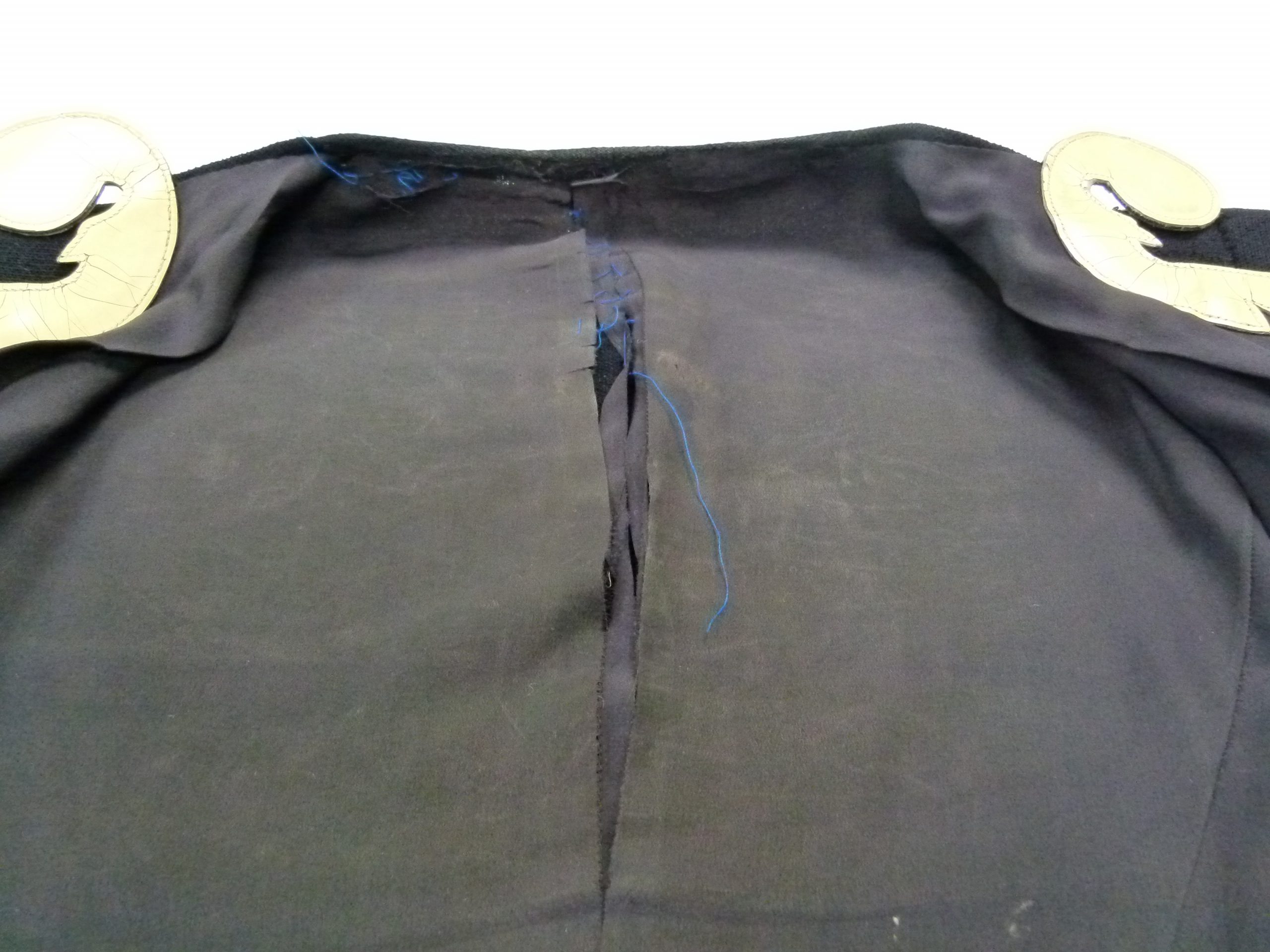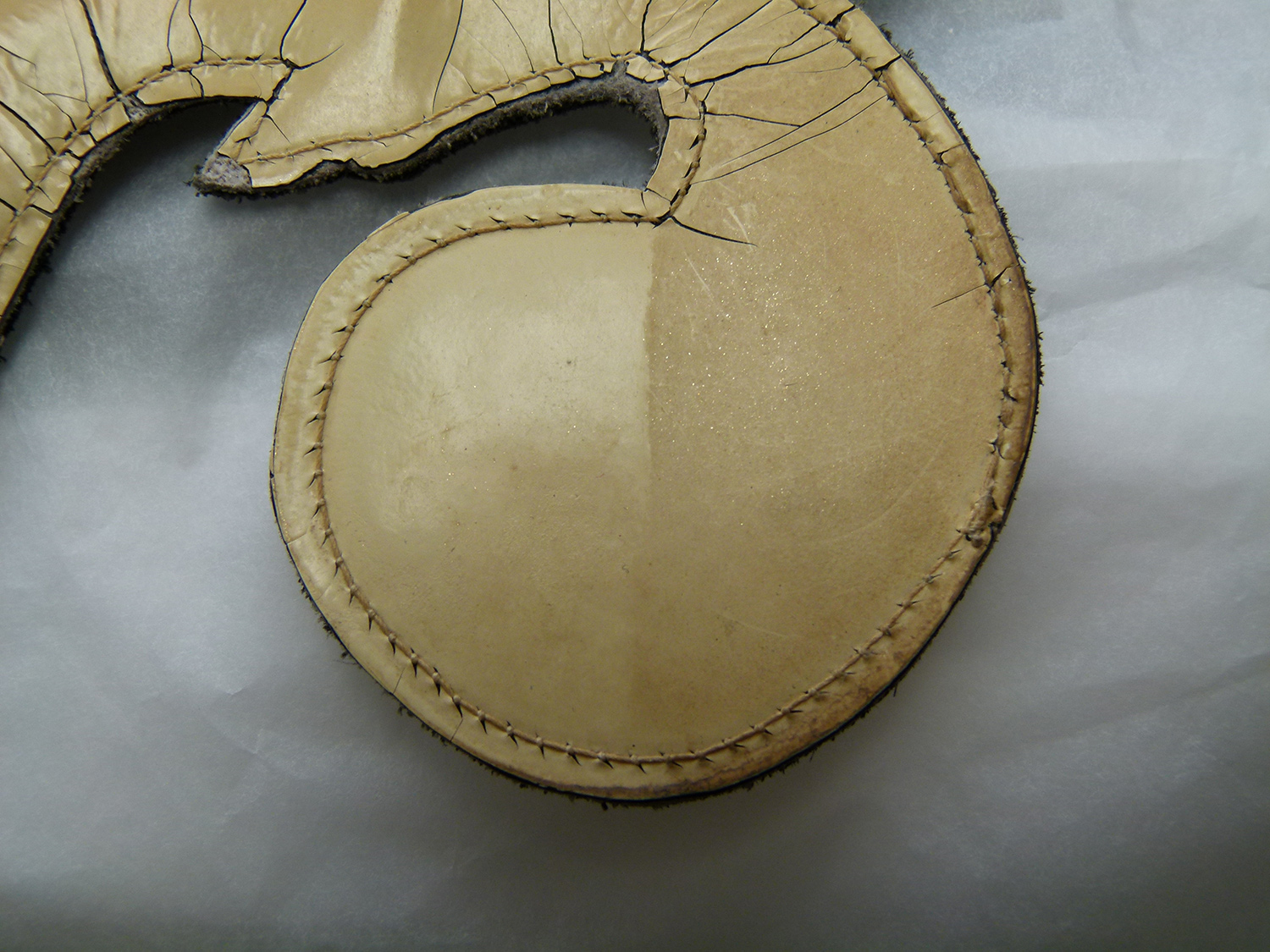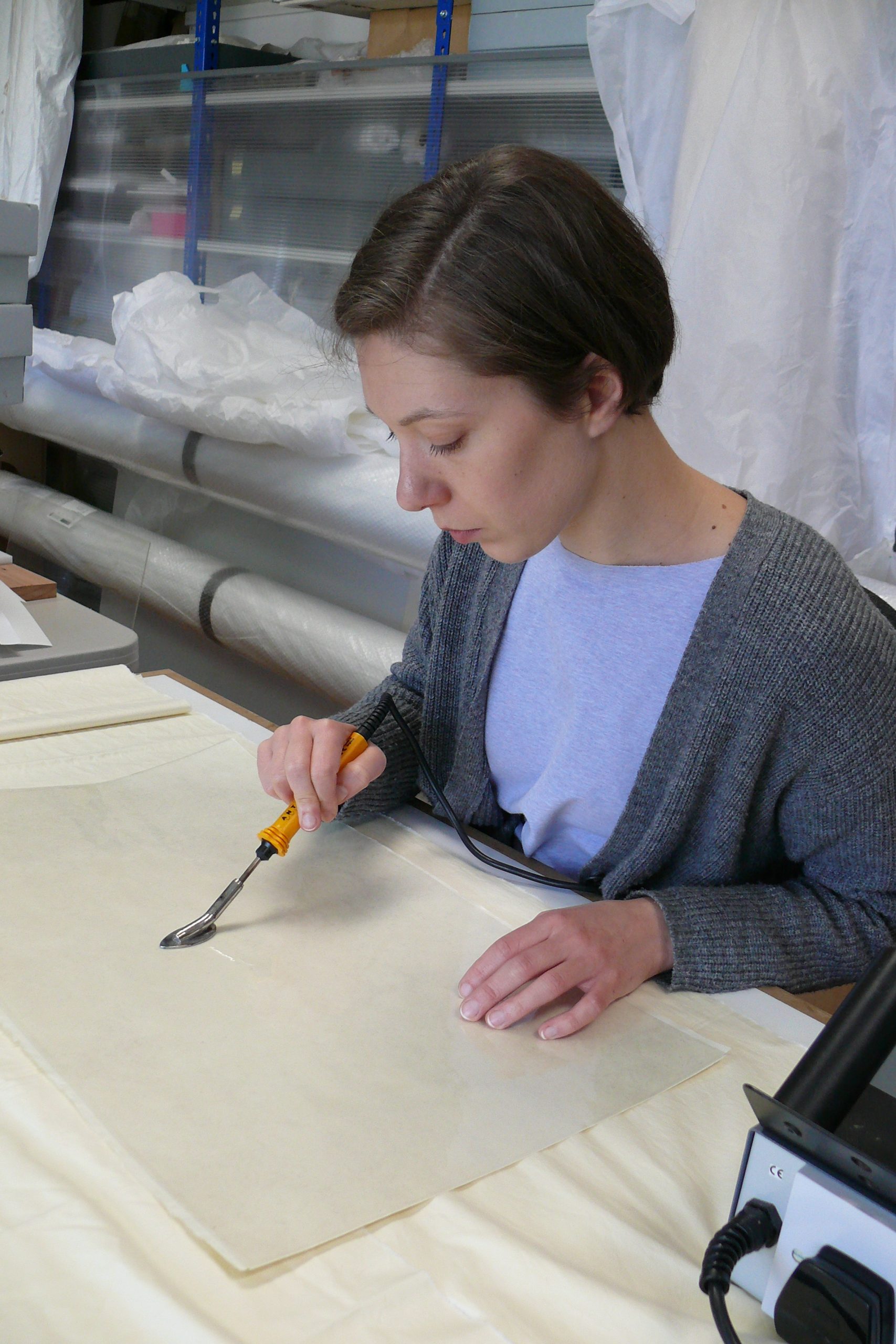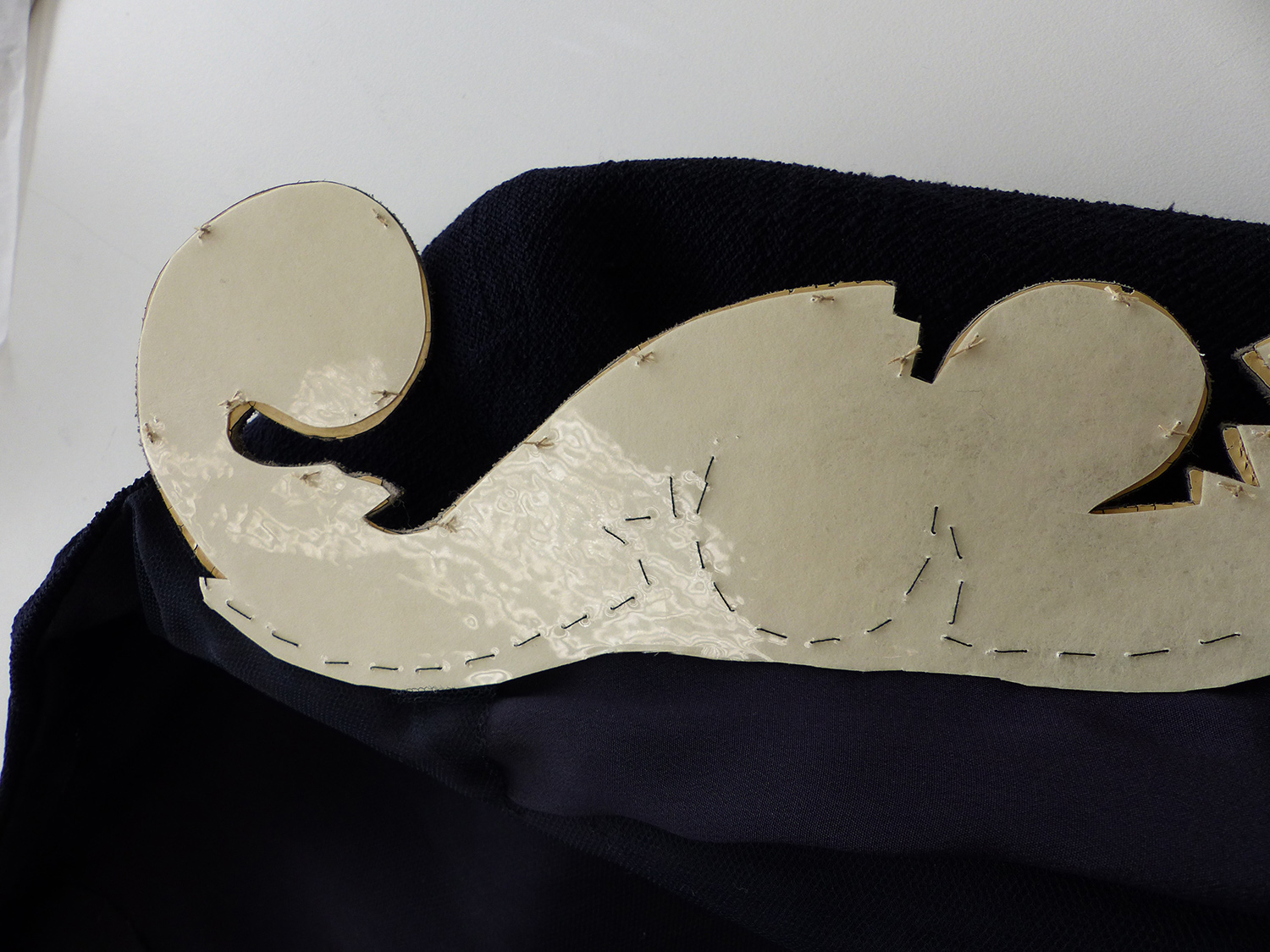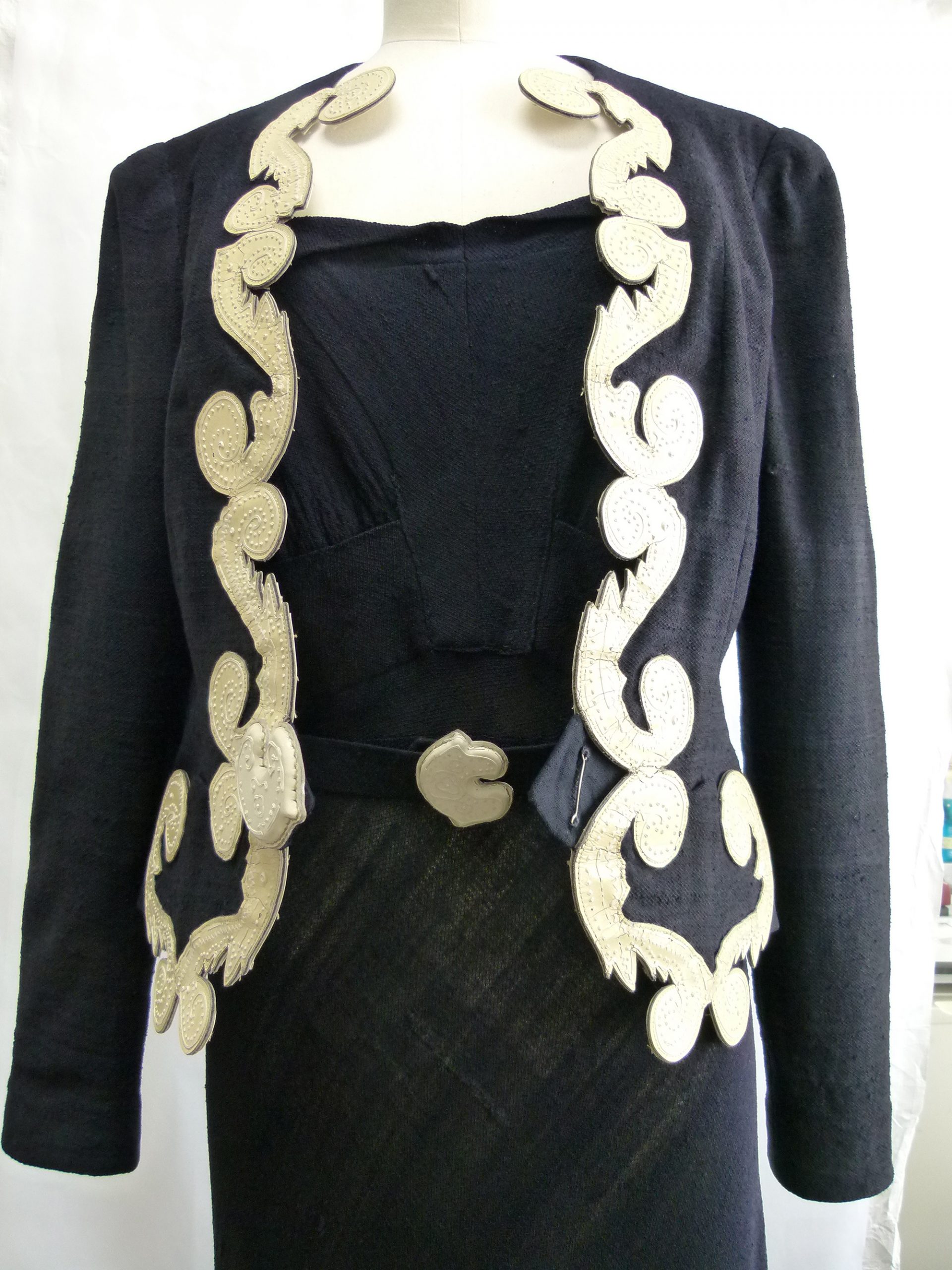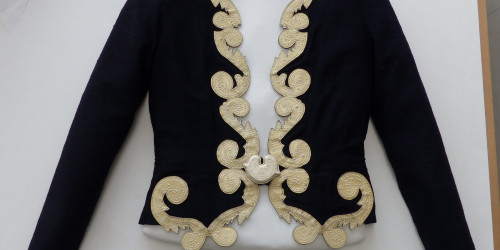
This iconic Elsa Schiaparelli costume dating from 1937 came to us for conservation following its purchase by Manchester Art Galleries for inclusion in the exhibition Vogue 100: A Century of Style.
A version of the same outfit is known the world over as that famously worn by Mrs. Simpson on the eve of her marriage to Edward VIII and photographed by Cecil Beaton. As an obviously well-worn and well loved outfit the matching dress and jacket showed many external signs of wear and the jacket lining was particularly damaged. However the main area of interest and challenge in terms of its conservation was the unusual trimming of the jacket – which analysis confirmed was cream patent leather with a cellulose nitrate finish further decorated with white paint. This combination of materials has all sorts of issues for handling, cleaning and consolidation.
After careful surface cleaning of the silk jersey outer layers the very damaged silk jacket lining was partially disassembled to allow cleaning and full support. Solvent cleaning proved essential because the lining was so soiled from the wearer’s body and make up. The solvent chosen reduced the greasiness of the soil enabling an adhesive and stitched support to go ahead. The conserved lining was restitched following original construction and the many holes and pulls found in the outer layers of the costume were repaired using stitching techniques.
Given that the cellulose nitrate component of the patent leather will continue to deteriorate it was felt pragmatic to undertake less rather than more treatment at this stage. After research it was decided to only minimally clean the soiled patent leather using a non-aqueous solvent and to consolidate only the worst of the delaminating flakes using the conservation adhesive Beva 371™ carried in Petroleum spirit. Patent leather commonly cracks with movement and so reducing the potential flexing and movement of the patent leather trimming was seen as a priority. To this end two ply Japanese tissue was laminated in Melinex™ again using Beva 371™. This was carefully cut to follow the shape of the decorations, inserted behind the lapels of the jacket and held in place using minimal stitching.
A flat mount for transportation and storage was made for the jacket. The costume was mounted in situ by conservators at the museum.
